- News
- Reviews
- Bikes
- Components
- Bar tape & grips
- Bottom brackets
- Brake & gear cables
- Brake & STI levers
- Brake pads & spares
- Brakes
- Cassettes & freewheels
- Chains
- Chainsets & chainrings
- Derailleurs - front
- Derailleurs - rear
- Forks
- Gear levers & shifters
- Groupsets
- Handlebars & extensions
- Headsets
- Hubs
- Inner tubes
- Pedals
- Quick releases & skewers
- Saddles
- Seatposts
- Stems
- Wheels
- Tyres
- Tubeless valves
- Accessories
- Accessories - misc
- Computer mounts
- Bags
- Bar ends
- Bike bags & cases
- Bottle cages
- Bottles
- Cameras
- Car racks
- Child seats
- Computers
- Glasses
- GPS units
- Helmets
- Lights - front
- Lights - rear
- Lights - sets
- Locks
- Mirrors
- Mudguards
- Racks
- Pumps & CO2 inflators
- Puncture kits
- Reflectives
- Smart watches
- Stands and racks
- Trailers
- Clothing
- Health, fitness and nutrition
- Tools and workshop
- Miscellaneous
- Buyers Guides
- Features
- Forum
- Recommends
- Podcast
feature
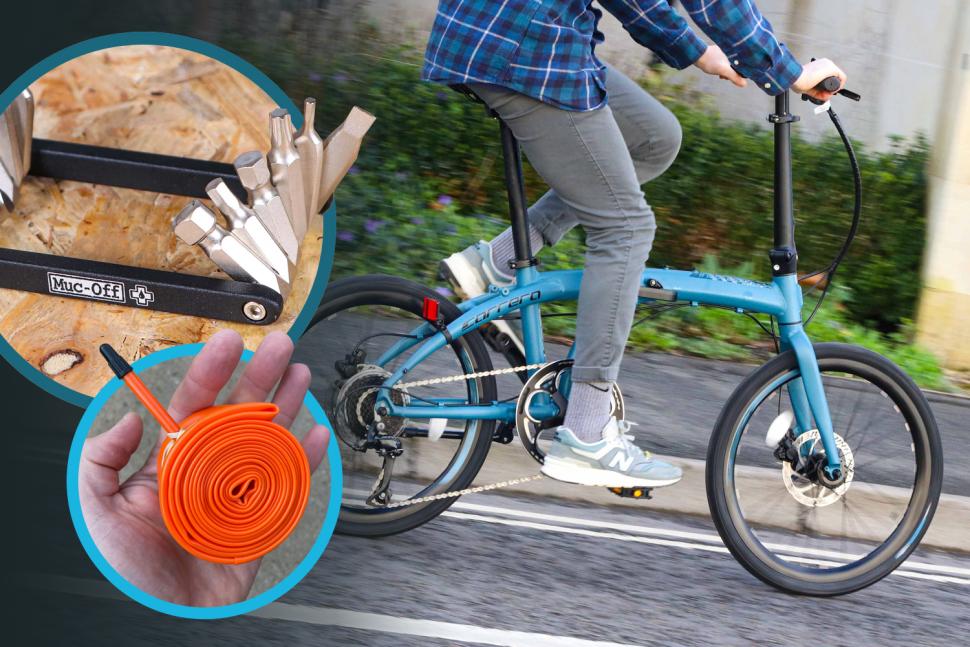 Common bike commuting mistakes and how to avoid them Sept 2024
Common bike commuting mistakes and how to avoid them Sept 2024Common bike commuting mistakes and how to avoid them — our top tips for hassle-free rides to and from work
Commuting by bike is a cost-effective alternative to driving or public transport, saving you time and stress by spending less time sitting in traffic or trying to find a parking space. It gives you a bit of exercise each day and is better for the environment, as well as saving you money in the long run. However, there are some common mistakes that can make your ride less enjoyable or even unsafe. Here are some common commuter mistakes and how to avoid them...
1. Not carrying spares or tools for roadside repairs
> How to keep your bike running smoothly
First on our list is to carry a spare tube, tyre levers, and a mini pump or CO2 canister to handle punctures - even if you're riding tubeless. Punctures are an unfortunate reality of cycling, and it’s important to be prepared for them, especially during your daily commutes if you have a meeting to get to at 9 am. Hopefully, you won’t need them, but you'll be glad to have them if you do.
A multi-tool is also a must-have for handling a range of issues that might come up during your commute. Minor mechanical failures don't need to be disastrous - they can often be fixed on the spot.
> A beginner's guide to building your first bike tool set
When choosing a multi-tool, make sure it has all the functions you need for your bike, including any sneaky Torx heads. It's also a good idea to familiarise yourself with some basic repair skills to stay prepared. Semi-regular bike maintenance on your bike will help you catch signs of wear or damage early, reducing the chances of problems occurring in the first place.
Carrying these essentials doesn’t need to take up a lot of room, especially with compact and lightweight options like TPU inner tubes available. Simply put them in your backpack, saddlebag or pannier and leave them there for whenever you need them. It's a good idea to store your spare tools and inner tube in a smaller bag to prevent them from rattling around in your rucksack or panniers and damaging the tube before you even need it.
2. Poor route planning
The route that you take to work will very much depend on where you live and where you’re heading but it’s worth considering the traffic volume, terrain and cycle infrastructure when planning your route to make it as stress-free as possible.
The shortest route or most direct route you'd take by car isn't always the best choice as it may include the busiest sections or the most elevation. By selecting the bike icon on Google Maps, you can find more cycle-friendly routes between your house and the office. Other platforms like Strava, Komoot and Cycle Streets also offer useful mapping tools. Some GPS devices, such as Garmin, even provide popularity routing, using data from online activities to recommend the most popular and cyclist-friendly routes between two points.
It’s worth familiarising yourself with your planned route, perhaps by riding it at the weekend before your first commute. You can also vary your route from day to day to keep things interesting.
3. Skimping on a lock
You might be tempted to buy a cheap lock but it's a false economy especially if you turn up at the end of the working day to find that your bike is no longer where you left it.
Don't be afraid to invest - no matter how much you spend, it’ll always be less than the cost of replacing a stolen bike and the hassle of working out how you’re then going to get home.
Look for locks with a Sold Secure Gold rating, such as the Kryptonite Kryptolok Standard U-Lock (£36.99). Some locks can attach to your bike or fit in your rucksack or panniers, but if you don’t want to lug a heavy lock on your commute, consider leaving one at work.
4. Letting your lights run out of charge
Uh oh, it’s 5:30pm in the middle of winter, you get on your bike to ride home and you find that your bike lights are out of juice. It happens!
You could consider investing in dynamo lights, which generate power as you cycle so your lights will never go out. For rechargeable lights, get into a very strict charging routine - keep a charger at work so you can recharge your lights during the day so they're ready for your ride home.
As a backup, carry a couple of emergency lights in your bag; they're small and lightweight so you'll barely notice them. Alternatively, use multiple lights on your bike, making sure they are at different charge levels to reduce the risk of both running out at the same time.
5. Forgetting a change of clothes
One of the worst things to happen is forgetting a piece of clothing. While forgetting your underwear may happen at least once and might be manageable for a day, forgetting your trousers is a much bigger issue. Our top tip is to keep a set of clothes at the office - either leave a spare set in a bag or bring some in on Monday and take it home on Friday to wash.
The same applies to not having dry kit for the ride home, as there’s nothing worse than putting soggy kit back on. If your cycle clothing gets wet on the way to work, you’ll need to dry it out during the day or have a spare set ready for the journey back. Since there’s no trusting the UK weather forecast, it’s definitely worth keeping some spare kit tucked away at work for when you’re in dire need.
6. Riding without mudguards
You can't always choose the time of day you ride to and from work, so encountering rain and wet roads is sometimes unavoidable. If you’re riding in cycling clothing you might not be too bothered if you get wet, but if you’re riding in clothes you’re going to wear for the rest of the day, it can be quite inconvenient.
Mudguards make a huge difference during your ride. They prevent spray from your tyres from soaking you, your bike, and any items you might be carrying.
7. Hugging the kerb
> Road cycling for beginners: 10 tips to transform your cycling experience
Sitting in the gutter and not riding defensively can increase your risk of accidents and reduce your ability to respond effectively to potentially dangerous situations.
There are many reasons not to hug the kerb. Generally, roads camber off to the curb so it's where everything collects which can increase the risk of punctures. It’s also where slippery drain covers are positioned, it’s where pedestrians step out and it can also make you less visible and tempt motorists to squeeze past when there’s not enough room for them to do it safely.
Riding too close to parked cars can also be dangerous because those car doors sometimes open…
For these reasons, take up the primary position in the centre of your lane when you feel that's the best option. You're fully entitled to do so and it's often the safest choice.
8. Poor clothing choices
There’s no right or wrong when it comes to what you should wear while commuting by bike - ultimately, you should choose what works best for you. However, some clothing options can make your ride more comfortable, especially for longer commutes.
If you wear jeans at work and have ever attempted to ride to work in them, you might have noticed how uncomfortable they can become over a longer distance, which can detract from the enjoyment of your ride.
While Lycra cycling shorts will provide plenty of comfort for longer rides, they might be excessive for your daily commute. Fortunately, there are plenty of cycle-specific jeans, trousers and shorts out there that are designed for both on and off the bike, so there’s no need to change when you get to work.
9. Racing!
Many of us have found ourselves unexpectedly caught in a race with a stranger, chasing an imaginary finish line for reasons we can’t quite explain. While the thrill of competition is tempting, it can risk your safety and leave you hot and sweaty - certainly not ideal if you plan to wear the same clothes for the rest of the day.
If you’re a Strava user, it’s best to avoid getting too caught up in chasing KoM or QoM segments during your daily commute and save the racing and segment hunting for the weekends.
10. Trusting the weather forecast
Weather forecasts can provide a general idea of what to expect, but they’re not always accurate, and conditions - especially in the UK - can change quickly. To avoid being caught off guard, it's a good idea to carry a small, packable waterproof jacket at all times.
Consider investing in cycling-specific clothing designed to handle various weather conditions. Items like windproof and waterproof jackets, waterproof trousers and thermal jerseys can make a big difference. `
With the right gear, you’ll stay dry and comfortable on your commute, no matter what the weather brings.
What are your commuting mishap stories? Let us know in the comments section below.
Emily is our track and road racing specialist, having represented Great Britain at the World and European Track Championships. With a National Title up her sleeve, Emily has just completed her Master’s in Sports Psychology at Loughborough University where she raced for Elite Development Team, Loughborough Lightning.
Emily is our go-to for all things training and when not riding or racing bikes, you can find her online shopping or booking flights…the rest of the office is now considering painting their nails to see if that’s the secret to going fast…
Latest Comments
- Secret_squirrel 4 hours 47 min ago
Um...no. Spitting is grim and there is never any excuse.
- Another_MAMIL 7 hours 43 min ago
Q36.5 Gregarius Essential Bib Knickers fit the bill: 3/4 length bib tights for warm weather.
- Rendel Harris 7 hours 54 min ago
Jolly good. Only it hasn't been and it is still a public bridleway. Feel free to look it up.
- jaymack 8 hours 44 min ago
"...it feels more like a £100+ jersey". It's almost as if cycling apparel is over priced.
- mike the bike 9 hours 56 min ago
I've had a few Lezyne bits and bobs over the years and while it's true I've never bothered to return anything under warranty, I've had a couple of...
- mark1a 8 hours 59 min ago
There's a transition period. For the benefit in kind (BIK) tax to the employee, it will be treated as a goods vehicle as it is now (rather than a...
- hawkinspeter 10 hours 8 min ago
Parents say East Bristol Liveable Neighbourhood makes roads '100 times safer' for children:...
- mdavidford 10 hours 14 min ago
Isn't basically all carbon recycled? From stars?
- velodinho 11 hours 30 min ago
As witnessed at so many infrastructure improvement projects similar to this one, all those who object should ignore the consultation and pray at...
- Nagai74 13 hours 18 min ago
It's a DLO to those in the trade.
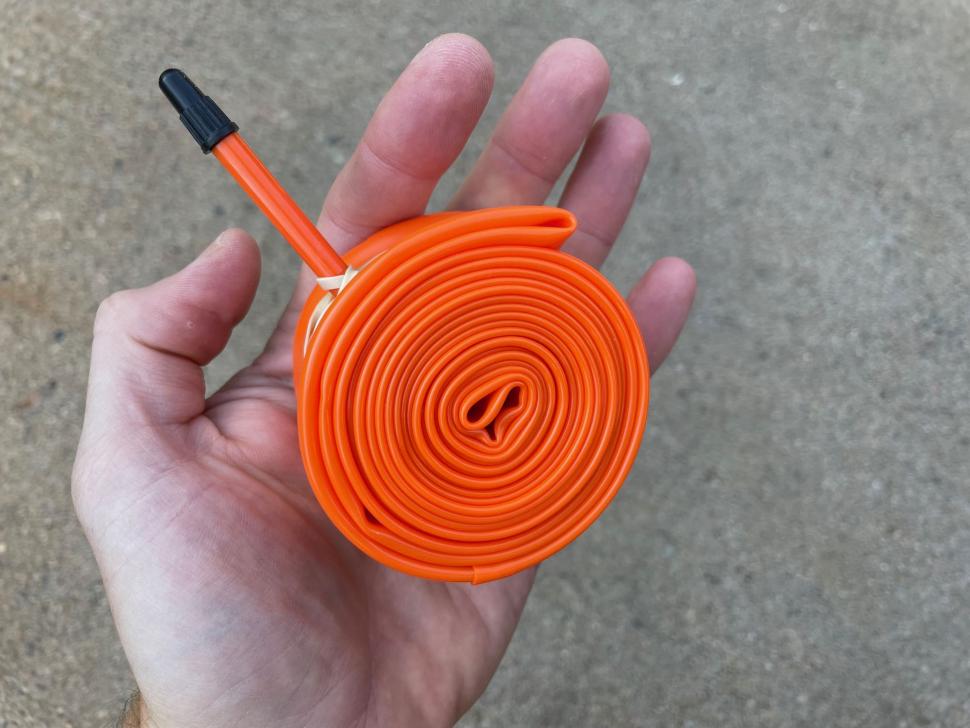

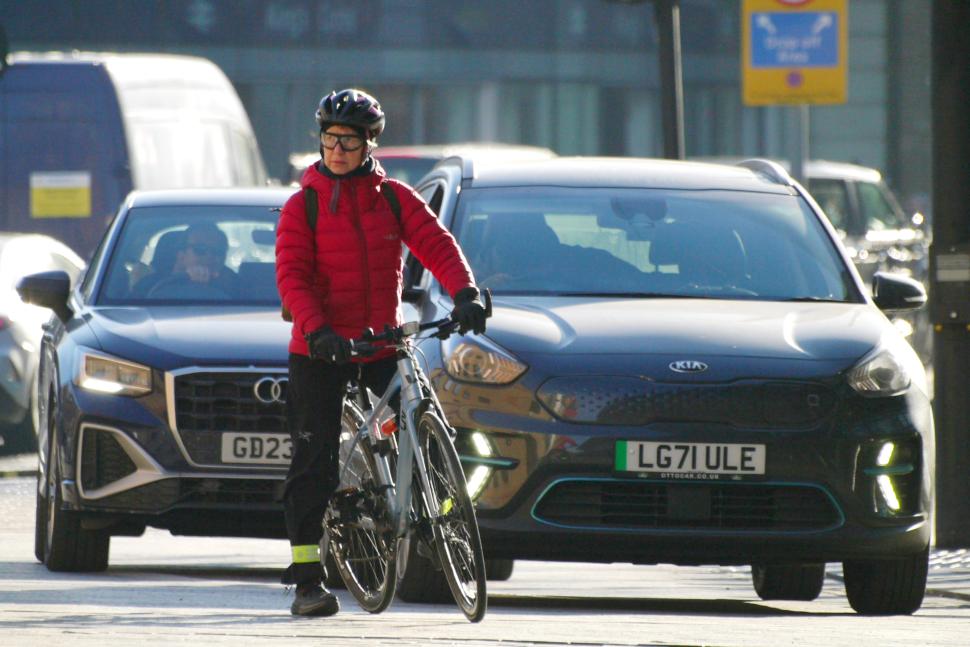


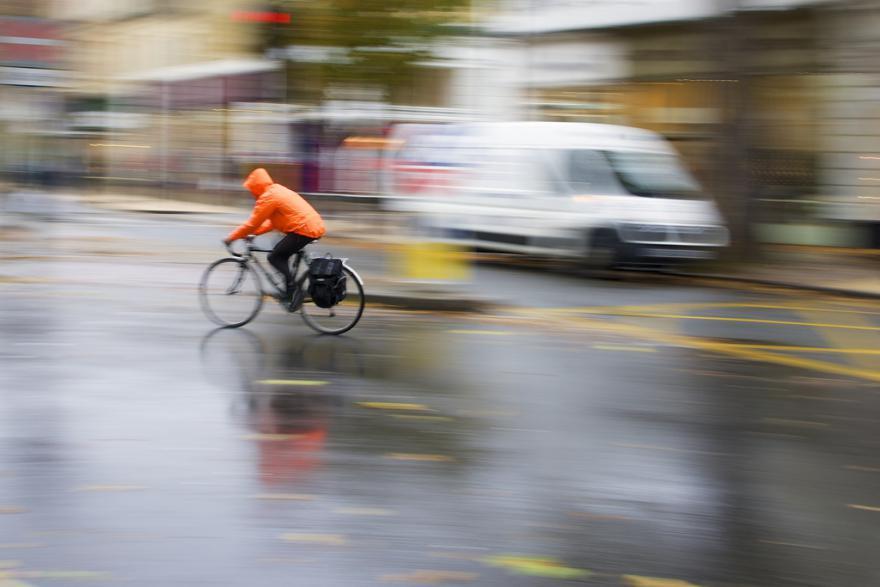

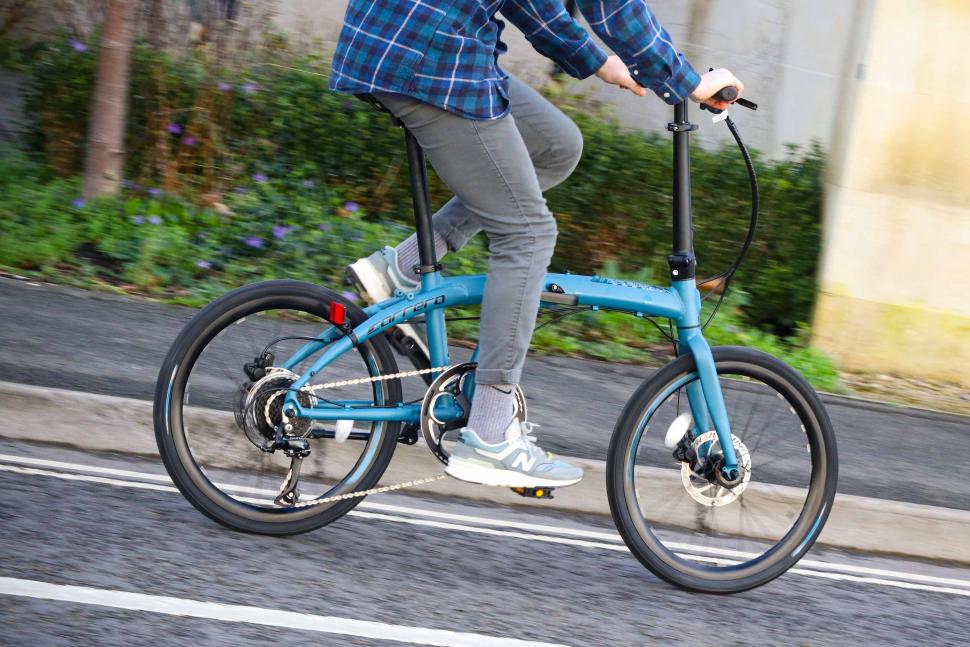

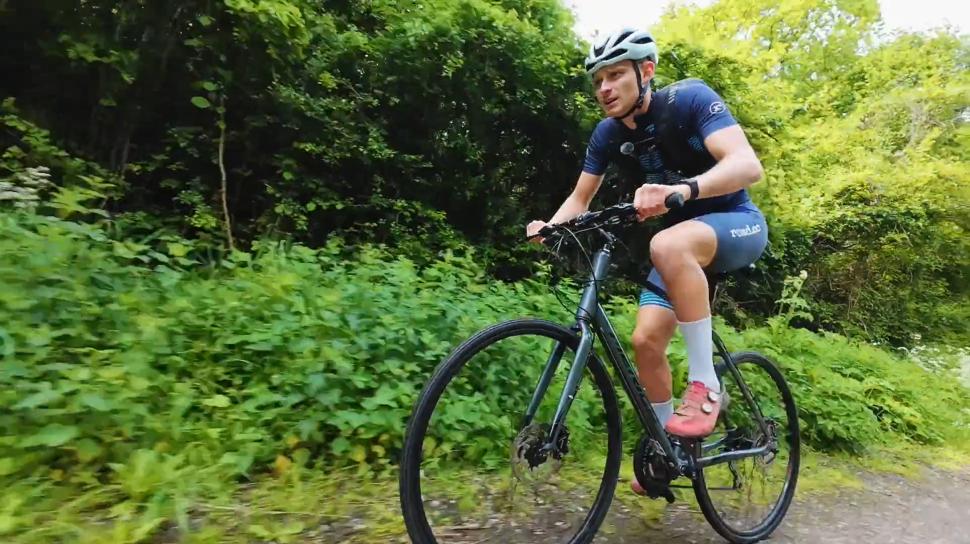

Add new comment
91 comments
Your honor, my client admits to a blood alcohol level three times the legal limit and being under the influence of cocaine but the cyclist was not wearing hi-vis so we move the case be dismissed.
So ordered!
I once had someone observe that no-one had an excuse for not seeing me. I replied "That's what my widow will tell the judge".
I jad a taxi driver pull up beside me at a traffic light to comment on how visible I was.
Thaks, I replied, why didn't you stop at the first white line instead of joining me in the bike box?
Overall: sadly in the UK cyclists need to do more than other road users to keep themselves safe. Society (including planners, the law etc.) essentially considers you're choosing to take additional risks and it's on you to keep safe, not others.
This shouldn't put anyone off cycling though. Overall you can expect better health outcomes (and happiness!) if you cycle than if you don't.
In my experience the few bad experiences I've had have almost all been
a) punctures (occur more often in the wet! Plus your tyres / wheels will be grimy...)
b) other simple mechanical failures (mostly cables parting)
c) bike theft.
The first two can be made (almost) non-dramas through some very easily-learned skills and carrying a few tools and spares. Even better is if you undertake basic, semi-regular maintenance on your bike. That makes issues less likely to happen (you can spot wear / damage) and you'll be confident and practiced at basic fixes if you do so.
Theft - you can mitigate against that somewhat. Somewhat sadly in my experience it seems to involve not leaving a new / shiny / moderately expensive bike outside your house / secure workplace. ("Secure" bike storage? Might just be a secure place for cutting locks in overnight...)
Of course you may have the odd unpleasant encounter on the road, depending on where you ride. And for a few unlucky folks bad health outcomes - because our safety isn't fully under our control.
Roll on a radically different approach to safe, convenient and social travel. Until then Mark Twain's comic review still applies: "Get a bicycle. You will not regret it, if you live."
Seat Post
Having commuted on a bike in London for 25 years, I would recommend removing your seat post, when you secure your bike, always an effective deterrant.
Facial Recognition
Humans are conditioned from an early age to recognise a human face (At one time the Queens face was enlarged on the bank notes to reduce counterfeiting). It would be interesting to do some research, where the actual sized image of a face is displayed on a bike/helmet/jacket, to see if other road users identify them more quickly than a cyclist pedalling with their head down. I always try to give other road users a good stare in the hope that they will identify me more quickly. Still cycling...
It is difficult to purchase hi visibily cycling pants. I buy fluorescent yoga pants and convert them with crotch pads.
What's your superhero name?
Flouromam
[That was meant to reply to Chris]
Wouldn't Flouromam have superpowers related to baking and motherhood? Disabling bad guys with bicarb and sound advice.
I can see you were raised properly! A well-bred fellow, "a pleasant chap at tea-time" wrote he...
Quick, patent your design. 👀
I noticed the riders were all wearing dark clothing as well, not good, at the least put on a cheap home improvement safety vest in a bright neon green or orange if there is a lot of greenery around where you live, and make sure the vest has wide reflective bands.
Lights need to be doubled up on, you have your main 700 plus lumen light that is bright enough to see the road if you ride after dark, and a small but bright strobing light added to the helmet, and you should have a very bright 300 lumen plus taillight fastened somewhere on the bike, and a smaller one on the helmet. Doing this allows the lights to be seen better. Different countries have different lighting laws, but in the States, I can have my main front and rear lights on steady, and the others on the helmet flashing. Then I also wear reflective ankle bands that hold the pant legs against my leg so they don't get chewed up by gears or crank arms.
I read people complaining in the comments about how useless hi-vis is, I strongly disagree, if I hi-vis was useless then why do road crews wear them? Road crews wear them because, after many years of study, they found that hi-vis is safer for the crews, plain and simple, and a fact that is well known universally across the globe. Is hi-vis guaranteed to keep cyclists or road crews safe? no, just as airbags and seatbelts don't guarantee you'll survive an accident either; but they do increase your survival chances, and it is the same with hi-vis clothing.
I'll take the shortest route to work whenever possible, and try to stay on bike paths and lanes whenever possible, but coming home, I usually take a self-prescribed detour that takes me into a 20 to 30-mile ride. I was lucky in the 45 years I commuted to work by bike, all the places I lived were within 5 miles of work.
Your first line of defense against flats is the tire, most jobs are not going to be happy with you if you keep showing up late due to flats, it's not an excuse, once a year is fine, but not all the time because someone wants to ride on racing tires. Find a robust set of tires, and to be extra safe go to a second line of defense and use a flat liner like the Clear Motion Rhinodillo liners, these work a heck of a lot better against flats than the Mr Tuffy liner, and they are lighter in weight, plus they have a soft edge that goes against the tube which prevents the liner for chaffing the tube. Today's tires are a lot better against flat than they were even just 15 years ago, I experienced the changes that tires went through, and all the changes have been good. Don't bother with thorn-resistant tubes, they don't work, and they are extremely heavy more than some tires weigh! Today's thorn-proof tubes are all junk, the valves are the crappiest of the worse and have a high failure rate, and there are problems with seams separating, so you end up with more flats than you would have had using a good quality regular tube. Sealant is another weight issue, unless you're using tubeless tires there is no need to use sealant in tubes.
Some of you have been commuting for years but here is a safety website you all should at least read to see if something in it makes you think, just google: "Bicycle Safety: How to Not Get Hit by Cars"
There is a tragic video you all need to see, this is about a big truck that kills a promising doctor, both were at fault but the doctor more so because she was inexperienced in knowing what to do in high traffic areas, and knowing what to do around big vehicles, the driver should have been paying more attention, but it is possible that the driver thought she went into the designated bike lane and since big trucks have huge blind spots he never saw her, so he should have stopped and cleared his mirrors first. Once the truck runs over her traffic moves enough for you to see the fact that she was not in the designated bike lane as is outlined with a picture of a bike on the pavement, she was in fact in a designated bus pickup lane. She also failed to see that the truck had its turn signals on for 8 seconds before turning, that is quite a ways but she came up alongside the right side of the truck anyway. The people who put this video out for all to see were from a cycling activists organization, they make it sound like it was all the truckers fault because he had her in view for 16 seconds, not true, she was in his blind spot, watch the video carefully understanding what I said about what she did wrong and you'll see it wasn't mostly the trucker's fault; yes the driver continued on, but a big truck isn't going to feel much of anything running over a bicycle, and if he did feel something he probably thought he ran over the curb which he did clip. They also argued that the driver made an unexpected wide turn, again not true, he had to swing wide to miss the light pole next to the curb, and flatbed trailers do not turn as well as a box trailer. So google: "Anita Kurmann Video - Massachusetts Bicycle Coalition (massbike.org)"
This case was resolved and it turned out after extensive investigation by both sides of the complaint that the doctor was mostly at fault. The city of Boston due to this accident has made some important changes on their city streets in a bid to try to make cyclists safer, but at the end of the day, our safety is in our hands, not other drivers, and not on the city.
Be safe out there everyone.
"I read people complaining in the comments about how useless hi-vis is"
Then you didn't read what people wrote.
"I noticed the riders...
[long victim blaming rant, finishing on an incantation:]
Be safe out there everyone."
Studies are now showing that the brain is tuning out fluro yellow as everyone and their granny is wearing it. Even now in the U.K. there is signage at roadworks highlighting that there are workers in the carriageway and to be cautious.
Bottom line is that a lot of motorists simply don't pay attention. They slip into autopilot as they travel from A to B and are caught up in all the things that are happening in their lives.
Adaption and learning taking place!
While I don't doubt there are studies which showed this was safer a) when was that? b) we should be cautious about taking industrial principles and applying them to normal public space. (Presumably road crews are also at risk from their own heavy plant?) c) Once something is held to be "safer" it tends to then be required. Bigger firms can be somewhat risk-averse when it comes to e.g. compensation claims. Better just to mandate PPE for all workers.
My wife worked at a port. When she got the tour, they gave her a hard hat.
"It won't do anything for you but it will ensure the insurance claim goes through."
Edit: a friend was on a building site and disagreed with the manager about the level of h&s. Manger was a bit lapse on this. He finished the conversation and promptly hit his unprotected head on a scaffold pole.
The majority of 'Road crews" are protected by signage, cones, barriers and their vehicles.in the UK we have the Red Book which tells organisations that need access to the roadway how to set up their access point.
The workforce should always work in front of their parked vehicles, so their vehicles are hit first.
Individual hi-viz is very low down on the protection scale.
11. Being Invisible.
The photo with item 10 shows a cyclist wearing all black clothes, black backpack, drab green/black helmet, black handlebars. One low mounted front light, presumably similar rear light. When riding into a shadowy area like that behind him in the picture or between a dark area and a car approaching from behind or in front, for the driver he is difficult or nearly impossible to see.
The car driver immediately in front of or behind him can see his lights but the drivers following those two vehicles very often can't.
Wearing a white or light coloured helmet or a hi-vis vest (£5 or less) makes riders MUCH easier to see - wearing both is even better.
You can only be seen by people who are looking and looking for cyclists, m/cs. The image does not take account of contrast or "I was blinded by the sun reflecting off his hi-viz".
This is the truth of the matter.
You can try to maximise your visibility but it's almost never going to be relevant. Observant drivers will be able to see you and inattentive drivers won't see you no matter what you wear. It's almost unheard of for cyclists to be hit by observant drivers, even if they're wearing the most camouflaged outfit possible as the driver would still spot the bike.
The focus on cyclist clothing is just a diversionary tactic to avoid discussing poor driving standards.
I was expecting that picture to contain a squirrel, but I couldn't see it. I assume it wasn't wearing hi-vis?
Contrast of colours, between the green or orange of a hi-vis vest and it's reflective straight-edged strips, and whatever is to be seen behind or beyond the person wearing it, is part of my reasoning, which is based on what I see around me - I cycle when I can and drive a small car when I have to.
It's not the contrast of colours you might wear but the contrast to the background.
What has hi Viz got to do with your image ?
I note you don't address looking and I will point out this thread is to educate people. Failing to address the issue that drivers do not look does not help people inexperienced in commuting, it gives them a false sense of security.
Contrasting colours can help but unless the motorist is proactively watching the road you are stuffed. Currently I'm driving to work with early starts. I've no problem picking out people cycling. There's one fella I pass san lights and no reflective kit and I see him 30m out on a reasonably lit road. Personally it makes little odds what is worn as long as decent lights pedal reflectors are being used. Cyclists get hit regardless of what they're wearing because far too many drivers are distracted, inattentive, daydreaming and lazy rather than observant. I loose track daily of seeing drivers staring blankly ahead with no movement of their heads. It's this that needs to change.
Agree giff77 - perhaps it's useful to add some specifics for newer road cyclists. (It should be in there for those driving but until then...) Call it Highway Code plus. Specifically around junctions:
a) always check for vehicles wherever they ought to be, but also where they're not (cutting corners, wrong side of road, driving through red lights).
b) If you can't see their eyes they haven't seen you - but if you can it doesn't mean that they have seen you.
a) Constant bearing, decreasing range - as you approach a junction it's possible for a vehicle approaching on a joining or crossing road to be hidden by something until the last second because of junction geometry. Or for you to be hidden by the side pillar of a car. Also for some junctions this may mean you need to look *behind you* along the joining road.
Half of commuting is route planning. Find a nice quiet route with few cars and it is pure joy.
I'd add ... try to keep your right turns to a minimum - unless they are light controlled or have a refuge.
Few things more vulnerable at rush hour than a cyclist trying to turn right on a narrow road.
Also attempt to minimise riding into a low sun.
I have to commute a long way so I carry a puncture repair kit, mini pump, tyre levers, multi tool and fast chain links. All have come in handy over the years either fixing mine or other commuter's bicycles.
Don't just sling an inner tube in the bottom of your bag with the multitool and tyre levers without first placing it in a stout protective bag/box else when you need it you will almost certainly find rattling tools have already puncture it.
Pages